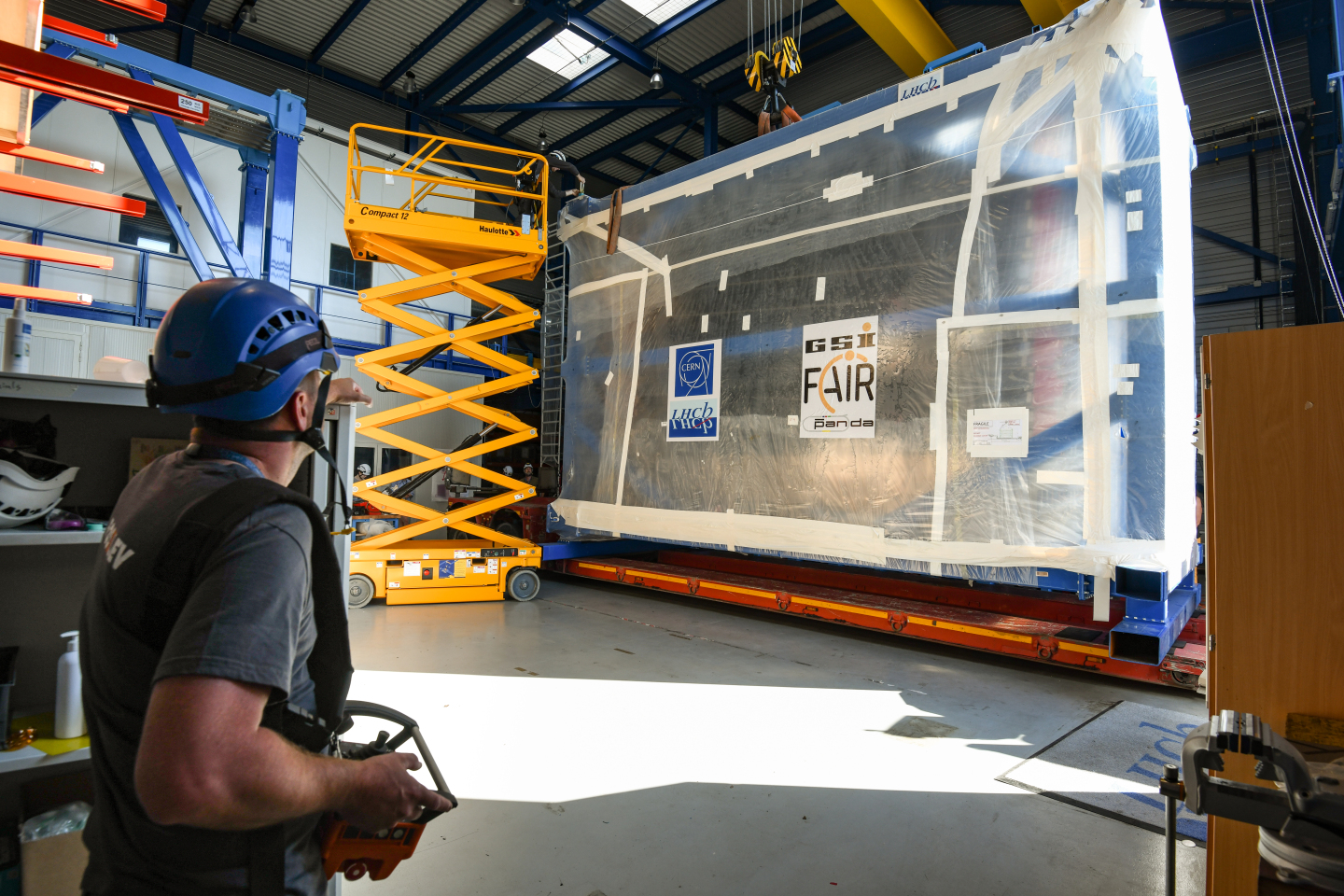
Impressions of the outer tracker's journey from LHC Point 8 at CERN to GSI/FAIR in Darmstadt, where it now awaits its second life.
Located near Geneva airport, the LHCb experiment is one of the four big experiments at CERN's Large Hadron Collider (LHC). Dedicated to the study of b-quarks, LHCb uses a set of successive detectors to study the traces of the particles thrown forward from the collision point. One of these detectors is the outer tracker, which was replaced during Long Shutdown 2 by a new set-up based on scintillating fibers, the SciFi. The latter comes with a more refined granularity, allowing for a higher spatial resolution of the tracked particles.
The outer tracker was still in good shape and working perfectly, despite having been in operation for a decade. Therefore, after discussing the spare detector module at a conference with colleagues from the GSI Helmholtzzentrum für Schwerionenforschung, the LHCb collaboration decided to donate it to the PANDA (antiProton ANnihilation at DArmstadt) experiment, which will be hosted by FAIR - the Facility for Antiproton and Ion Research - currently under construction at GSI.
At PANDA, the outer tracker will partly go back to resume its initial function of tracing the smallest building blocks of matter. With the aid of the FAIR accelerators, antiproton beams will be generated and stored, then collided with fixed targets (e.g. hydrogen) inside the PANDA detector set-up. As this will happen at lower energies, the outer tracker will be able to detect the light hadrons produced by the collisions. Hadron spectroscopy is where the physics goals of LHCb and PANDA overlap, and the two will be able to collect complementary data that can later be analysed and compared. The tracker will also be used by students and young researchers in R&D projects, as well as in outreach activities for schools and the general public.






